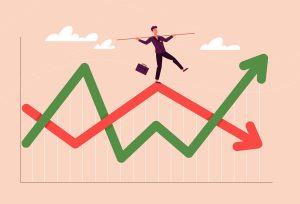Win the Race for Higher Risk-adjusted Stock Returns
April 18, 2023228 views0 comments
In his latest book, ‘Magic Words,’ Wharton marketing professor Jonah Berger explains how subtle changes in the language we use can have a big impact on persuading others.
The more risk you take with your investment bets, chances are you can earn more returns than other investors — so goes an old maxim in the stock markets. But that maxim doesn’t hold in all settings, according to a new paper by Wharton finance professor Nikolai Roussanov and University of Florida finance professor Alejandro Lopez-Lira. The paper was cited as an “outstanding paper” by Wharton’s Jacobs Levy Equity Management Center for Quantitative Financial Research in its 2022 list of winners of research papers.
Read Also:
The paper, titled “Do Common Factors Really Explain the Cross-Section of Stock Returns?” challenges the notion of “a trade-off between systematic risk and expected returns” when analyzing the attributes of specific stocks for their ability to predict “excess returns” or higher returns than the rest of the market.
“The big-picture question is, is there a risk-return trade-off in the asset markets?” Roussanov said. “We generally think in academic finance that the only way to get a higher rate of return is by taking on more risk.” In standard arbitrage pricing theory, only systematic risk — or risk related to common economy-wide variables such as volatile energy prices or inflation — ought to be rewarded with an excess return, or one that exceeds the risk-free rate, the paper noted. An example of a security with a risk-free rate would be Treasury bills.
In order to generate high returns, “systematic risk” should be such that it “can’t be diversified away” or spread across a wide basket of different securities, Roussanov said. “If it’s diversifiable risk, then in a large enough portfolio of different securities, that risk goes away.”
Many sophisticated investment firms have built their models of predicting returns around the idea that certain stock characteristics represent some “deep sources of risk” that investors need to be compensated for bearing, said Roussanov. Among those practitioners he cited are well-known quantitative investing firms such as Dimensional Fund Advisors and Applied Quantitative Research, which were founded by students of Nobel economic sciences laureate and University of Chicago finance professor Eugene Fama, who is best known for his “efficient markets hypothesis.”
That theory of efficient markets assumes that asset prices reflect all available information, and therefore it is impossible to beat the market consistently by factoring in supposed risks. Most quantitative hedge funds, however, aim to exploit mispricing in order to generate “alpha,” or extra return that does not come with additional systematic risk, which implies deviations from market efficiency. But over the years, competition and the use of sophisticated quantitative analytical techniques have eroded the ability of investors to predict returns by weighing different stock characteristics, Roussanov noted.
Designing Stock Portfolios that Keep Up with Investment Risks
Roussanov and Lopez-Lira found a way around that seemingly impossible setting to identify risks that cannot be hedged away and therefore can justify a premium for those willing to bear those risks. They used advanced statistical tools that incorporate machine learning and “the AI of finance” to study historical data on stocks to predict individual stock returns as well as to find common sources of variations in the returns. They found that even though those stocks carried significant systemic risks, they could be hedged out. Their dataset of returns on U.S. stocks focuses on the period 1974–2021.
Roussanov said they used a “factor methodology” to construct investment portfolios that hedged away or diversified away common sources of risk, and obtained attractive risk-adjusted rates of return. “How we construct those statistical factors is where our secret sauce is,” he added. Those portfolios produced high Sharpe ratios, which are a measure of risk-adjusted returns relative to volatility in prices, he said.
Essentially, the methodology allows investors to remove large sources of risk and therefore the volatility that isn’t accompanied by extra returns (as compensation for bearing that risk), Roussanov explained. “That is a useful tool for risk management and for reducing volatility in portfolios. You can generate the same alpha with less risk (or excess return relative to that of a benchmark index).” The idea is to get rid of the risk that is not compensated for with an extra return, he explained.
After investors reach that stage where they obtain high Sharpe ratios by reducing volatility, they could “scale it up,” Roussanov continued. “You can always increase the risk in a portfolio and thereby increase the returns proportionately.”
The Race for Predictability of Stock Returns
Could investment fund managers use the methodology Roussanov and Lopez-Lira have designed to generate higher returns for their clients? “Certainly, our methodology suggests that fund managers can do better, perhaps in terms of removing non-diversifiable risk,” said Roussanov. But those windows may not be available for long because every time new variables or risks are discovered, competition between investors drives down the predictability of returns.
Technology will, however, offer savvy investors and fund managers new ways to squeeze out more risk-adjusted returns from stocks. “The machine learning arms race will continue, and quantitative investors will be able to find better sources of predictability,” Roussanov said.
Roussanov said their paper has relevance in the present times because of the prevailing macroeconomic setting. “We’re now in an environment with a lot of systemic risk, and a lot of the macro uncertainties are rattling everybody,” he added. Those macroeconomic uncertainties include inflation, the Federal Reserve’s monetary tightening policies, energy prices, and the war in Ukraine, he noted.
“If you are not a macro fund and do not have a strong view of what will happen on the macroeconomic front, you don’t want to be exposed to those risks,” Roussanov said. “You would want to exploit the relative mispricing of stocks. This current environment is exactly where our strategy is most valuable.”

